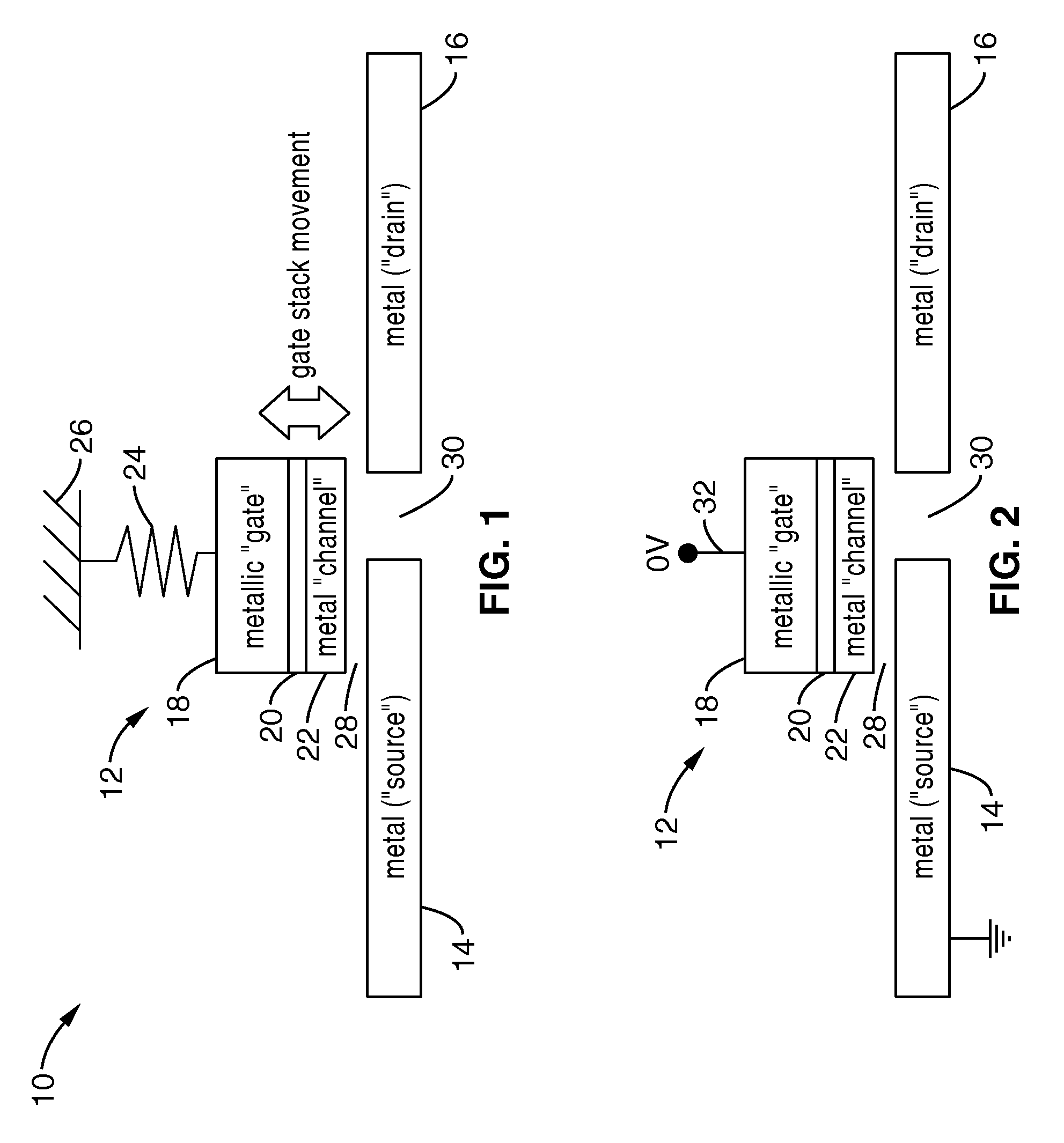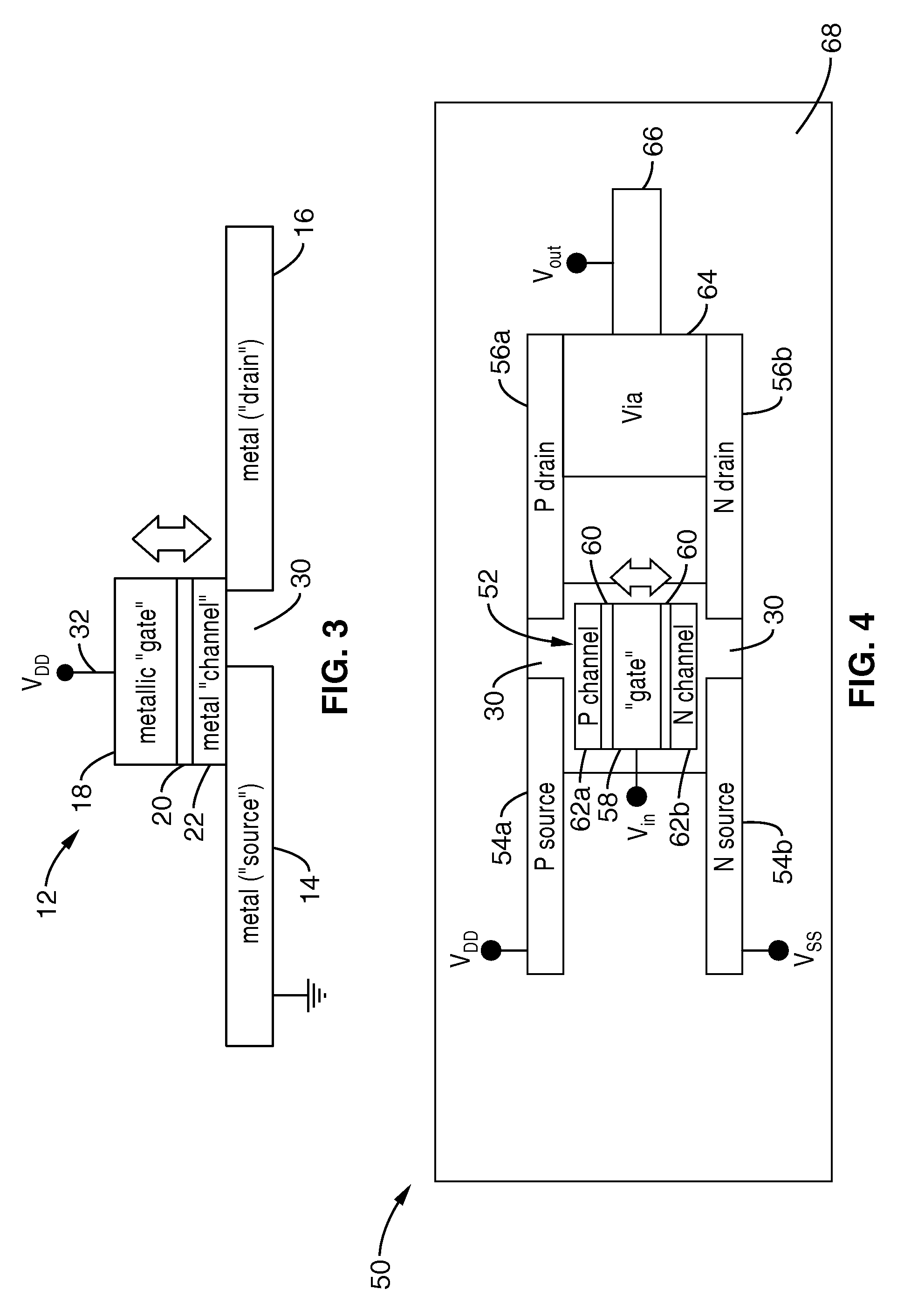Metal-insulator-metal (MIM) switching devices
a switching device and metal-insulator technology, applied in circuit-breaking switches, pulse techniques, instruments, etc., can solve the problems of increasing exponentially, affecting the operation efficiency of the switch, etc., to achieve excellent on-state conductance, wide operating temperature range, and radiation hardness
- Summary
- Abstract
- Description
- Claims
- Application Information
AI Technical Summary
Benefits of technology
Problems solved by technology
Method used
Image
Examples
embodiment 210
[0137]FIG. 15 illustrates by way of example, an embodiment 210 of a sleep transistor pair with MIM-based NEM switching devices 212a, 212b. Movable gates 214a, 214b, are shown upon whose underside are channels regions 216a, 216b for bridging source 220a to drain 222a, and at the same time source 220b to drain 222b. Drains 222a, 222b are connected, respectively, to separate outputs 224a, 224b. The base of movable gates 214a, 214b is anchored at anchor regions 218a, 218b. Source 220a is coupled to power supply VDD 72, while source 220b is coupled to ground connection VSS 74. Although not shown in this figure, the exemplified structure comprises metallic cantilevers 214a, 214b and conductive channel regions 216a, 216b between which a gate dielectric is disposed, thus forming a MIM structure.
[0138]NEM Device with Tunable Threshold Voltage.
[0139]NEM devices according to the present invention can be fabricated to provide a tunable threshold voltage. At least one embodiment of a NEM switch ...
embodiment 290
[0144]FIG. 19 illustrates a comparison between CMOS 270 and CMIM 290 embodiments with regard to driving of a large capacitive load. Multiple CMOS inverters 272 are shown coupled in series to drive a large capacitive load 274. The series connection is necessary as each MOSFET device has an on-state resistance on the order of kilo-ohms. However, embodiment 290 depicts a single CMIM device 292 capable of driving the same large capacitive load 274, therein reducing power consumption and layout area.
[0145]Characterization of CMIM Devices.
[0146]The gate delay of a CMIM device can be characterized as:
tdelay=telectrical+tmechanical
[0147]The value of telectrical represents a very small value, as it is approximately two orders of magnitude smaller than that of a CMOS device with the same W / L due to the lower on-state resistance and lower capacitance of the CMIM device. In the following analysis it is assumed that the volume within which the channel, or channels, are traversed by the movable ...
PUM
 Login to View More
Login to View More Abstract
Description
Claims
Application Information
 Login to View More
Login to View More - R&D
- Intellectual Property
- Life Sciences
- Materials
- Tech Scout
- Unparalleled Data Quality
- Higher Quality Content
- 60% Fewer Hallucinations
Browse by: Latest US Patents, China's latest patents, Technical Efficacy Thesaurus, Application Domain, Technology Topic, Popular Technical Reports.
© 2025 PatSnap. All rights reserved.Legal|Privacy policy|Modern Slavery Act Transparency Statement|Sitemap|About US| Contact US: help@patsnap.com



